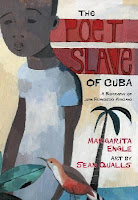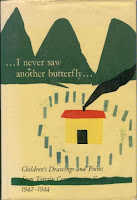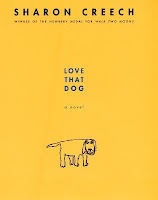
Citation:
Engle, M. (2006). The poet slave of cuba: a biography of juan francisco manzano. New York, NY: Henry Holt. Illustrator: Sean Qualls. ISBN: 9780805077063.
Review:
Engle presents an emotional poetic verse biography of a Cuban slave named Juan Francisco Manzano. Readers will become engaged in Juan's story and feel empathy for the cruelty he experienced as a slave. Readers will also admire Juan's ability to find comfort in poetry during his life experiences...both positive and negative. Engle's character presentation allows the reader to connect with the story and one is able to distinguish each character by the rhythm of the verses. A moving story and the illustrations help the reader to visualize the story. The end of the book contains an historical note so the readers will be able to read more about Juan Francisco Manzano. Engaging book and recommended for older teens.
Excerpt:
"Juan"
These rhymes are mine
mine alone
never memorized
or copied
in any way
Rhymes about
soaring in spirit
a spark imprisoned
bursting it bonds
of clay
Rhymes about feeling delight
wrapped in love
alive
and able
to pray
Introducing the Poem:
This is a great example of showing teens how creating individual rhymes about feelings can be written in a poetic form. I would instruct students to journal a rhyme from their feelings and share with the others if so desired. I would also inquire if students could share any other examples of rhymes that were motivated by emotion. This will help students explore rhymes, rhythms and poetry!




